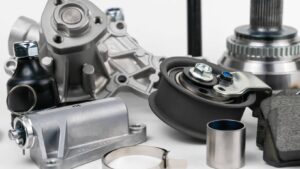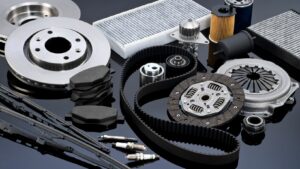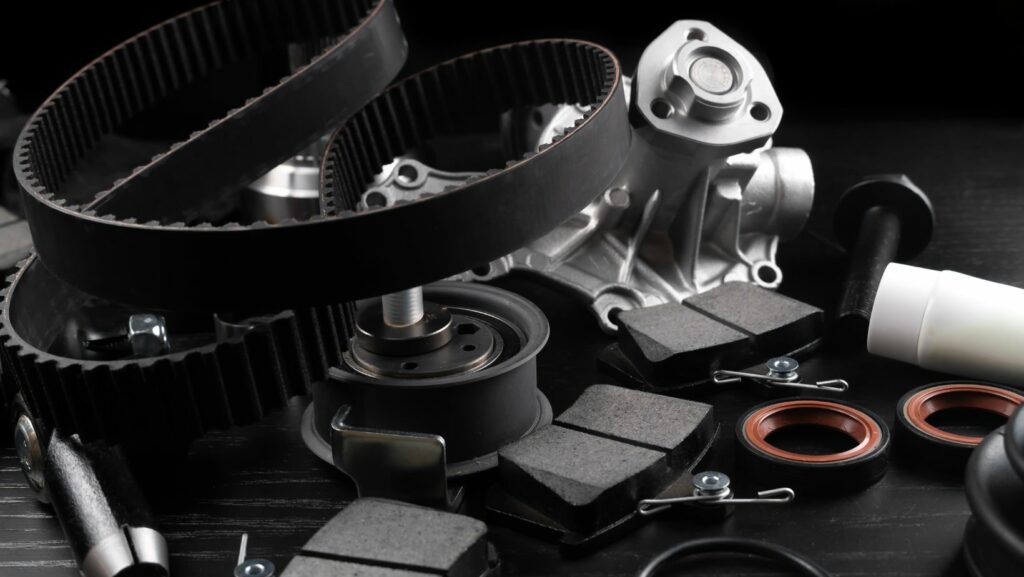In the intricate world of automobiles, each part plays a crucial role in the vehicle’s overall performance. From the engine to the exhaust, every component has its own story to tell. This article will delve into the fascinating realm of automotive parts, providing a comprehensive guide to what keeps our wheels turning.
Automotive Parts
In an automobile’s anatomy, certain components stand at the helm. Two significant parts take the limelight when discussing the intricacies of the mechanics – the Engine and the Transmission System.
Engine Parts and Functions
 An engine, often deemed as the heart of an automobile, significantly impacts a vehicle’s performance. Each component in an engine holds a unique function while working in concert to generate power for the vehicle. The engine integrates crucial elements such as pistons, cylinder blocks, valves, and spark plugs among others. Illustratively, pistons, operating in cylinder blocks, constitute the core of power production. In contrast, valves control the flow of fluids in and out of the cylinders, and spark plugs ignite the necessary combustion to generate power.
An engine, often deemed as the heart of an automobile, significantly impacts a vehicle’s performance. Each component in an engine holds a unique function while working in concert to generate power for the vehicle. The engine integrates crucial elements such as pistons, cylinder blocks, valves, and spark plugs among others. Illustratively, pistons, operating in cylinder blocks, constitute the core of power production. In contrast, valves control the flow of fluids in and out of the cylinders, and spark plugs ignite the necessary combustion to generate power.
Transmission Systems Explained
Alternate to the engine, the transmission system or ‘the gearbox’, plays an equally vital role. It provides controlled application of the power generated by the engine. The principle components in a transmission system consist of gears, clutches, and shafts. For instance, gears multiply and regulate torque, mediating power from the engine to the wheels. Clutches, on the other hand, facilitate smooth gear transitions. Lastly, shafts serve as conduits for the transfer of mechanical power from one point to another within the transmission system.
The Role of Innovation in Automotive Parts
Innovation plays a pivotal role in the automotive parts sector, driving improvements in materials and automation of parts production.
Advancements in Materials
 Remarkable advancements in materials put forth an era of resilient, lightweight, and sustainable automotive parts. Key players in the industry now predominantly incorporate materials such as high-strength steel, aluminum, plastics, and composites in their part designs. These materials not only aid in the reduction of vehicle weight but also boost fuel efficiency and performance.
Remarkable advancements in materials put forth an era of resilient, lightweight, and sustainable automotive parts. Key players in the industry now predominantly incorporate materials such as high-strength steel, aluminum, plastics, and composites in their part designs. These materials not only aid in the reduction of vehicle weight but also boost fuel efficiency and performance.
Automation in Parts Production
Advancements don’t cease with materials, the embrace of automation in parts production marks another important leap towards efficiency. More automotive companies resort to automated systems for part fabrication, introducing levels of precision and productivity unprecedented in traditional methods.
Major Players in the Automotive Parts Industry
Diving deeper into the sphere of automotive parts, we explore the significant entities dominating the industry – the Original Equipment Manufacturers (OEMs) and aftermarket suppliers.
OEMs vs Aftermarket Suppliers
The automotive parts industry thrives on a strong symbiosis between OEMs and aftermarket suppliers. OEMs, brands like General Motors, Ford, and Toyota, supply parts directly for vehicle assembly. These companies are reputable, build quality parts for their specific models, and often carry warranty assurance for their customers.
Geographic Hotspots for Automotive Part Manufacturing
The global map of automotive part manufacturing underlines the dominance of particular regions. Asia, especially China, Japan, and South Korea, leads in the production of essential automotive components, thanks to technological prowess and robust industrial infrastructure.
Future Trends in Automotive Parts
The emerging trends in the automotive parts industry highlight a paradigm shift towards more sustainable and smart options. They further exhibit the industry’s adaptation to evolving consumer behavior, technology, and regulatory norms.
Electric Vehicle Components
 As global awareness regarding climate change increases, electric vehicles (EVs) present a greener alternative to traditional combustion engine cars. EVs rely on different sets of parts than conventional vehicles, providing ample opportunities for OEMs and aftermarket suppliers. For instance, the rise in EVs necessitates the production of highly efficient, compact, and lightweight batteries. Companies such as Tesla, LG Chem, and Panasonic lead the charge in high-density energy storage solutions.
As global awareness regarding climate change increases, electric vehicles (EVs) present a greener alternative to traditional combustion engine cars. EVs rely on different sets of parts than conventional vehicles, providing ample opportunities for OEMs and aftermarket suppliers. For instance, the rise in EVs necessitates the production of highly efficient, compact, and lightweight batteries. Companies such as Tesla, LG Chem, and Panasonic lead the charge in high-density energy storage solutions.
Smart Technologies in Automotive Systems
Technological advancements continue to shape the automotive parts landscape. Infotainment systems, like Apple’s CarPlay and Google’s Android Auto, offer connected driving experiences, turning cars into extensions of one’s digital life. These systems require advanced display interfaces and audio components, signaling a new area of growth in the sector.
Apart from infotainment, safety systems in vehicles have significantly evolved. Comprehensive driver-assistance systems like Tesla’s Autopilot, General Motors’ Super Cruise, use advanced sensors, LiDAR, cameras, and radar. Their incorporation further augments the demand for precision-crafted automotive parts.



